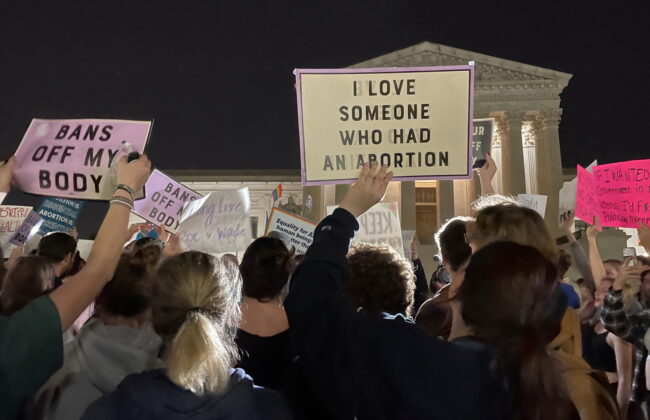States decide abortion laws after Supreme Court overturns Roe v. Wade

A draft opinion published last month showed that the U.S. Supreme Court would vote to overturn the historic case. Early on June 24, the case was overturned 5-4.
The abolition of Roe v. Wade allows states to make their own decisions on abortion legislation, turning the desicion into a states’ battle.
Abortion is legal at the time of writing in 35 states, potentially illegal in 11 states, and completely banned in five states, according to Politico.
In May, Gov. Kevin Stitt signed a bill that would ban abortion in Oklahoma except in cases of assault reported to the authorities or to prevent the death of the pregnant person. This is the nation’s strictest ban.
In a post-Roe v. Wade country, states are faced with legislative decisions that determine pregnancy options and outcomes for years ahead.
Some states have trigger laws already in place that were set to ban abortion if and when Roe was overturned. Others may reactivate legislation that was in place before the 1973 decision.
Due to a trigger law, abortion will become illegal in Oklahoma when the attorney general certifies the new Roe v. Wade decision with the only exception being the life of the pregnant person.
“State laws banning abortion are automatically taking effect today, jeopardizing the health of millions of women, some without exceptions,” President Biden said in an address just after the decision.
Biden said the decision is “so extreme that doctors will be criminalized for fulfilling their duty.”
He continued.
“This fall, Roe is on the ballot. Personal freedoms are on the ballot. The right to privacy, liberty, equality, they’re all on the ballot,” Biden said.
Conservative states are working to enact bans while progressive states face a different battle.
In Minnesota, abortion remains legal but regulated. Regulations include a mandatory 24-hour waiting period as well as “state-directed counseling that includes information designed to discourage the patient from having an abortion,” according to the Guttmacher Institute.
Each state has its own unique laws and regulations about abortion. This article contains an overview of current abortion laws by state.
The total number of abortions per year in the U.S. is a difficult number to approximate, but Pew Research puts the current number between 625,346 and 930,160 using data gathered by the CDC and the Guttmacher Institute.
This number, which only includes safe, legal, and reported abortions, will most likely fall in 2022 as more states move to criminalize the act of ending a pregnancy.
This is a developing story.

